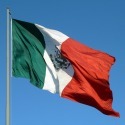
Expected to attract more than $7 billion in investment over a nine-year period, Mexico's plan to build a nationwide wholesale 4G network is definitely not short on ambition.
If the scheme's public- and private-sector backers can pull it off, Mexico will be left with a state-of-the-art network that retailers can use to provide mobile services throughout the country. It will incorporate many of the building blocks of 5G technology, and could serve as an example to players in other parts of the world whose markets face stagnation.
Branded "Red Compartida" (Shared Network), the scheme received a big boost at the end of March when Nokia Corp. (NYSE: NOK) and Huawei Technologies Co. Ltd. were chosen as key infrastructure partners. Nokia is to take charge of network construction in the north of Mexico and for the network core, while Huawei will have responsibility for the central and southern regions.
The expertise of two of the world's biggest equipment vendors will be invaluable to the "greenfield" player. The core network will be fully "virtualized," said Nokia in its statement, potentially giving Red Compartida an edge over network rivals still wrestling with a software overhaul of their systems. The use of 4.5G technologies should guarantee customers the highest-speed mobile services available. And the network will be designed to facilitate a future 5G upgrade that is as smooth and pain-free as possible. In its own statement, Nokia described the contract win as its biggest ever in Latin America.
Want to know more about 4G LTE? Check out our dedicated 4G LTE content channel here on Light Reading.
Yet the deals with Nokia and Huawei, which did not publish its own press release, are a reminder of the task ahead of Red Compartida. Mexico's sheer vastness, the lack of existing business on which to build, the rising levels of competition in the country's telecom market and the disappointments surrounding wholesale network ventures in other geographies all cast a long shadow over Red Compartida's prospects.
Skepticism that such a venture could succeed was apparent in November last year, when the Altán Consortium was awarded the project following a government tender that failed to attract much interest. Rivada Networks, the only other bidder, was eventually disqualified for not presenting financial commitments on time, clearing the way for Altán.
Made up of several Mexican and international investors, that consortium counts Morgan Stanley Infrastructure as its biggest shareholder, with a 33.38% stake in the business. The China Mexico Fund, which is managed by a unit of the World Bank, holds a 23.36% stake, making it Altán's second-biggest shareholder. Mexican telcos Axtel S.A.B. and Megacable Comunicaciones will contribute local expertise, each taking a 4.01% stake. Other significant shareholders include CDPQ, a North American pension fund manager, and Miguel Escobedo, a Mexican lawyer.
Altán's immediate challenge is to build a network capable of supporting a service launch by March 2018. Although its ultimate target is to cover 92.2% of the Mexican population, the operator aims to provide services to about 30% of people on launch. It has reportedly benefited from subsidized access to the 700MHz spectrum band, which governments in other countries have auctioned off for lucrative sums. Because signals travel much further in this sub-GHz band than in higher ranges, it should help Altán to roll out a network speedily and relatively economically.
Next page: Warning signs
Warning signs
Altán sees its coverage goals as an important differentiator, noting that existing 4G networks serve only about 50% of the population. The 4.5G capabilities of the Huawei and Nokia technologies might also be seen to constitute an advantage over some legacy networks. Yet the difficulty of profiting from mobile Internet business in more remote communities at least partly explains why coverage remains poor. According to a 2015 forecast from consulting firm PwC, smartphone penetration will rise from just 17.9% of the population at the end of 2014 to 61.9% by the end of 2020. While impressive, that increase will still leave nearly four in ten Mexicans without the main means of getting online used in many other countries.
A shared or wholesale 4G network could, of course, help operators to address some of the cost challenges of expanding their networks. But the network giants -- which include América Móvil S.A. de C.V. and Spain's Telefónica -- are unlikely to accept any kind of diminished role in communities they already serve. In a conference call earlier this year about its fourth-quarter results, América Móvil told analysts that competing on the strength of its network assets remained a priority. "To have the best network, the best coverage, quality in the fixed and in the wireless … we are still going to aim for that," said Daniel Hajj Aboumrad, the operator's CEO.
The launch of another network, then, will put further pressure on prices, making it even harder for Red Compartida to generate a healthy return on its investment. Having snapped up Mexican airwaves during an auction last year, US-based AT&T Inc. (NYSE: T) is in an expansionist mood south of the border, slashing prices in a bid to win market share. The average customer at América Móvil was spending just 132 Mexican pesos ($7) each month in the final quarter of 2016, 11.5% less than in the year-earlier period. New mobile virtual network operators could be a thorn in the side of the incumbents, but thin profit margins will make it hard for them to put down roots.
There are also warning signs from other parts of the world. While network operators have frequently been willing to share some of their assets with infrastructure rivals, government-mandated wholesale schemes have rarely had the desired impact. Australia's national broadband network initiative seems perennially mired in controversy about costs to the taxpayer. In Russia, meanwhile, a Mexico-like plan to develop a wholesale 4G network fell apart when one of the mobile operators that was supposed to use it acquired the venture's assets.
What counts in Altán's favor are its deep-pocketed investors and friends in high places. The choice of fierce rivals Nokia and Huawei to address different regions is a canny one, putting pressure on each vendor to keep pace with the other. And by taking advantage of emerging technologies as the network is built, Altán could unlock new mobile network opportunities ahead of other players.
Wholesale-only mobile ventures have made little progress elsewhere, despite their economic attractions. Tough as it will be to pull off, a success story in one of the world's most competitive mobile markets could make others take a fresh interest.
— Iain Morris, 

 , News Editor, Light Reading
, News Editor, Light Reading
About the Author(s)
You May Also Like












